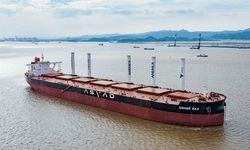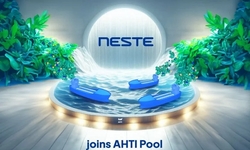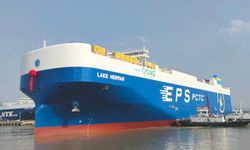In collaboration with Norwegian telecommunications provider Telenor Maritime, a zero-emission, electric barge owned by grocery distributor ASKO will be equipped with Eutelsat OneWeb’s Kymeta Peregrine u8 flat panel antenna system for the trial period.
The trial aims to test LEO connectivity and bandwidth for real-time data transfer, ship-to-shore communication, and remote vessel control. The ASKO barge, which runs on battery power, has been operating since 2022, transporting up to 16 trailers per trip across the Oslo Fjord. This operation helps reduce road travel by two million kilometers and lowers carbon emissions by 5,000 tons annually.
During the trial, the barge will be remotely controlled from a Remote Operatons Centre (ROC) at Kongsberg Maritime's facility in Horten, operated by Massterley, a Kongsberg Maritime and Wilhelmsen joint venture.
Pål André Eriksen, Senior Vice President of Remote & Autonomous Solutions at Kongsberg Maritime, commented on the trial's significance: “Our previous pilot projects have demonstrated that remote and autonomous technologies are viable for various vessel types. The challenge of achieving seamless connectivity is crucial for remote and autonomous operations, especially in open oceans. This project with Eutelsat OneWeb and Telenor Maritime is a step toward improving global connectivity and advancing autonomous shipping technologies.”
Alexandra Kenworthy, Director of Maritime & Energy at Eutelsat OneWeb, added: “This collaboration highlights the enhanced capabilities of high-speed LEO connectivity for maritime operators. Our work with Telenor Maritime and Kongsberg Maritime is key to driving digital transformation in the maritime industry, meeting the demand for reliable, low-latency connectivity that supports critical operations and improves crew communications.”
Knut Fjellheim, CTIO at Telenor Maritime, emphasized the project's importance: “This initiative is crucial for the future of autonomous vessels, not only in fjords and rivers but also in open ocean waters. With OneWeb's LEO coverage and our advanced connectivity platform, we are close to achieving near-total ship connectivity. It is exciting to be part of such groundbreaking innovation.”
Both ASKO vessels, also known as sea drones, feature a permanent bridge for manual operation and can also be controlled from the ROC. Future builds may eliminate the bridge if the autonomous concept proves successful.






